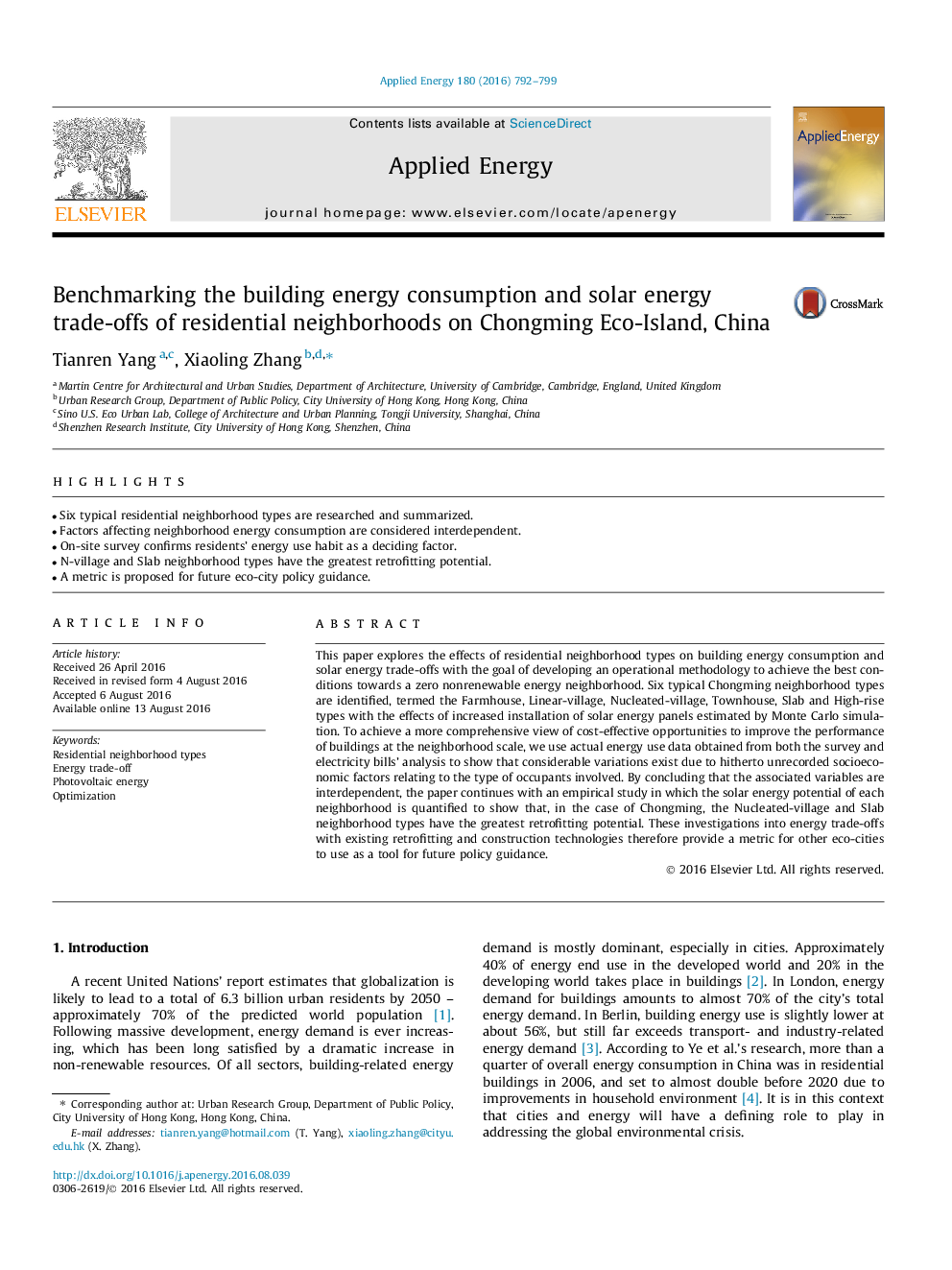| Article ID | Journal | Published Year | Pages | File Type |
|---|---|---|---|---|
| 6682332 | Applied Energy | 2016 | 8 Pages |
Abstract
This paper explores the effects of residential neighborhood types on building energy consumption and solar energy trade-offs with the goal of developing an operational methodology to achieve the best conditions towards a zero nonrenewable energy neighborhood. Six typical Chongming neighborhood types are identified, termed the Farmhouse, Linear-village, Nucleated-village, Townhouse, Slab and High-rise types with the effects of increased installation of solar energy panels estimated by Monte Carlo simulation. To achieve a more comprehensive view of cost-effective opportunities to improve the performance of buildings at the neighborhood scale, we use actual energy use data obtained from both the survey and electricity bills' analysis to show that considerable variations exist due to hitherto unrecorded socioeconomic factors relating to the type of occupants involved. By concluding that the associated variables are interdependent, the paper continues with an empirical study in which the solar energy potential of each neighborhood is quantified to show that, in the case of Chongming, the Nucleated-village and Slab neighborhood types have the greatest retrofitting potential. These investigations into energy trade-offs with existing retrofitting and construction technologies therefore provide a metric for other eco-cities to use as a tool for future policy guidance.
Keywords
Related Topics
Physical Sciences and Engineering
Energy
Energy Engineering and Power Technology
Authors
Tianren Yang, Xiaoling Zhang,
